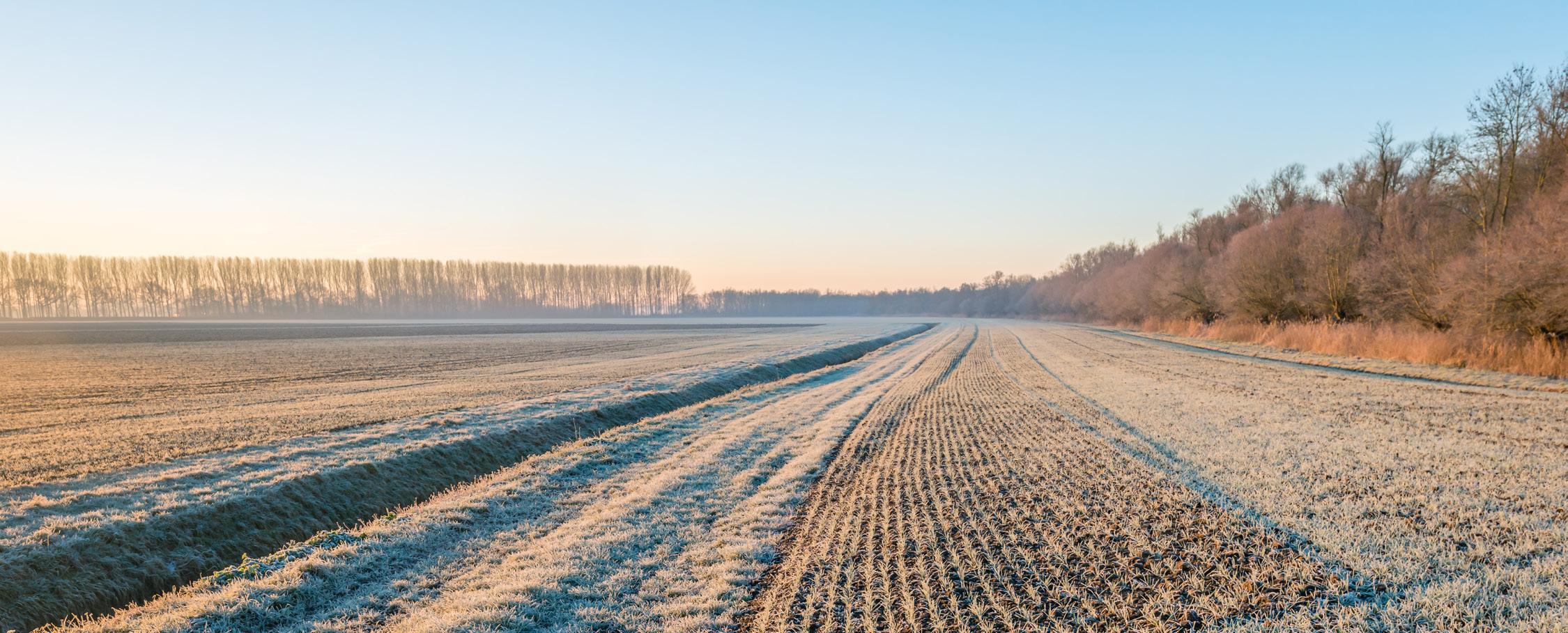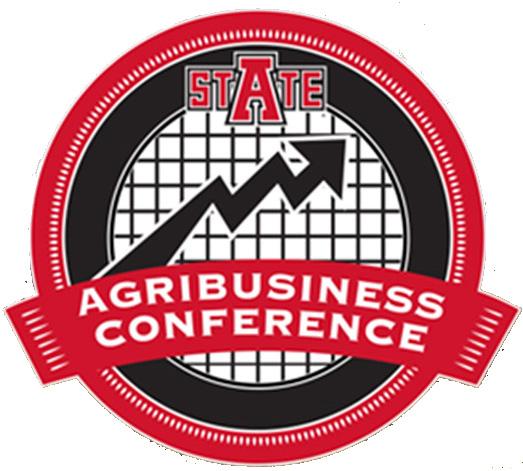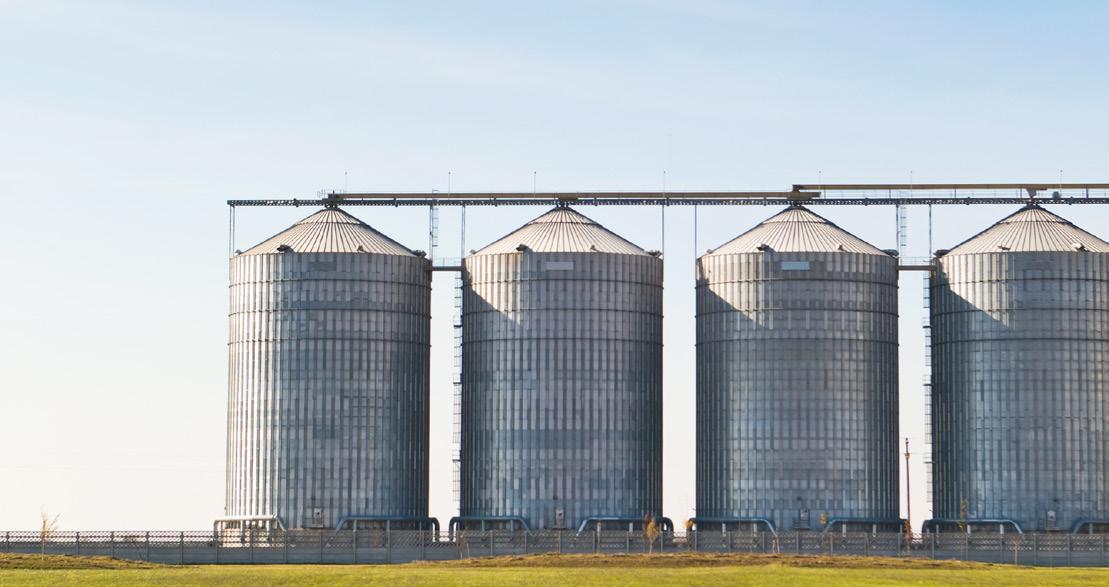Farm Bureau Press



Near the end of 2022, President Joe Biden signed the FY 23 Omnibus Appropriations Bill. The bill created a program designed to address the disproportionately higher inputs costs faced by rice farmers during the 2022 growing season. Specifically, the bill allocated $250 million to provide a onetime payment to farmers. The payment will be calculated by multiplying the payment rate, individual actual production history (APH), or area yield and an amount of certified rice acres determined by the number of planted acres and acres that were prevented from being planted. The payment rate has yet to be determined, as USDA must write the rule to implement the program.
ArFB President Rich Hillman has written Sen. Boozman to thank him for his work and to encourage him to work with USDA to craft rules that prioritize support for those who incurred the risk and made the investment in planting and harvesting a crop.

For more information on the program, see the University of Arkansas Division of Agriculture fact sheet online. In total, the bill allocated an additional $3.74 billion to offset crop losses due to droughts, wildfires, hurricanes, or floods, and $494.5 million for livestock disaster loss. Another $100 million was allocated to address losses incurred by cotton producers impacted by pandemic-related supply chain issues and depressed textile demand.

The Arkansas Livestock and Poultry Commision held a meeting on Jan. 12 at the Hot springs Convention Center. The board of commissioners, which includes current ArFB treasurer Dan Wright, goal is to safeguard human and animal health, assure food safety and quality, and promote Arkansas livestock and poultry industries for the benefit of our citizens.
Farmer and rancher delegates to the American Farm Bureau Federation’s 104th Convention adopted policies to guide the organization’s work in 2023. Key topics ranged from expanding risk management programs and improving dairy pricing transparency to battling hunger.
Delegates were polled regarding their farms at the beginning of the voting session. The results show almost 99% (334 delegates) of those who cast votes operate family farms and almost 65% represent small- to mid-size farms as defined by USDA.
Delegates to the American Farm Bureau business meeting voted to modernize the farm bill by expanding baseline funding, developing more flexible disaster relief programs and extending protection to more specialty crops.
They also voted to bring more transparency to the federal milk pricing system. Several changes to policy include support for more USDA audits of processing costs to ensure data remains accurate, and a Federal Milk Marketing Orders voting procedure that requires cooperatives to communicate more clearly with members regarding proposed changes. The results of an FMMO forum hosted by AFBF in October served as a guidepost for policy changes.
Recognizing growing food insecurity in the United States, delegates approved new policy to support access to nutrition programs including connecting farms directly with food banks, increasing the number of SNAP-approved food sales outlets, and other efforts to make produce available to families living in food deserts.
On trade, delegates added policy for USDA to continue working with the Mexican government to drop a proposed ban on imports of biotech corn. The new policy also encourages USDA to urge the Mexican government to accept established science on the safety of U.S. biotech products.
Voting delegates also formalized Farm Bureau’s position opposing the 2022 Waters of the U.S. rule and a proposed Securities and Exchange Commission rule if it requires Scope 3 emissions reporting from farms.
Continued from page 1
The Arkansas state meat inspection program was signed into action on Oct. 4, 2022. The process began in 2020 when the state of Arkansas received $10.4 million in federal funding for local meat processors. With that money 33 facilities in the state expanded their production capacity.
The state meat inspection program now has two inspectors who are undergoing training with the USDA Food Safety Inspection Service. There are also now two additional facilities in the state signed up to receive service from the state meat inspection program with several more facilities interested in joining.
With the addition of Arkansas, 29 states now participate in the MPI (Meat and Poultry Inspection) program. USDA-FSIS (Food Safety Inspection Service) provides up to 50% of the state's operating funds, as well as training and other assistance. In states with MPI programs, establishments have the option to apply for federal or state inspection, but product produced under state inspection is limited to intrastate commerce unless the producing establishment participates in the Cooperative Interstate Shipment program.
As of Jan. 18 there were no active cases of Avian Influenza (AI) in the state of Arkansas. The Northwest Arkansas commercial poultry facility impacted in 2022 is now cleared, restocked, and back to production. The only remaining flocks on quarantine are two backyard flocks that will be cleared in February and March.
The 29th annual Arkansas State University Agribusiness Conference will be held in Feb. 8, with a portion available online. The conference will focus on the global economy, agricultural policy and the next farm bill, the US macroeconomic situation, and commodity markets. The conference will end with the afternoon sessions.
The general session will feature four presentations:
• Dean Mickey LaTour will make announcements from the College of Agriculture.
• Dan Basse, president of the AgResource Company, will discuss world agricultural markets and outlook.
• Professor of agricultural economics at Texas A&M University Joe Outlaw and Mary Kay Thatcher, senior lead for federal government relations at Syngenta will discuss the economics and politics of agricultural policy and the next farm bill. Following the general session there will be three concurrent commodity sessions available in person only:
The Department of Agriculture is currently working on sourcing translators to share AI information to producers who are not fluent in English.
The National Poultry Improvement Program reported that, nationwide, 729 flocks were impacted by AI in 2022 with 329 of those being commercial flocks. The group also reported that it has returned to in-person facility inspections. The group has also created a hotline for reporting cases of sick or potentially infected poultry and wild birds. Anyone can call in reports to 501-823-1746.
Overall sheep and goat inventory has increased since last year. In many months through 2022, there was a 50 – 100% increase in total numbers sold in the same month compared to 2021. The Arkansas Department of Ag reports a monthly sheep and goat livestock auction summary to help improve price discovery in the state.
Overall cattle sale numbers dropped in the last quarter of 2022, likely because of drought-related herd thinning and early calf sales.
The Department of Ag is working on producing updated inspection forms and manuals for livestock auctions. Dr. John Nilz, the state veterinarian, discussed the upcoming FDA guidance that will restrict over the counter livestock antibiotic sales in June of 2023.
• The rice industry issues and outlook session features Grayson Daniels from Riceland Foods, Inc., Josh Hankins with USA Rice and Austin Brown with Riceland Foods, Inc.

• Jeff Johnson from Allenberg Cotton Co. will discuss the cotton market and industry issues.
• Arkansas State University professors David Newman & Jerica Rich will discuss livestock industry issues and outlook, focusing on the global animal protein outlook and trends in beef reproductive technologies.
The luncheon will begin at noon in the First National Bank Arena and features Dr. Christopher J. Waller, a member of the Board of Governors of the Federal Reserve System.
Online registration for the luncheon by Jan. 30 is requested, however day-of walk-in registration will be available.
For questions or more information, contact Abigail Jorgenson Coleman at 870-972-2416 or ajorgenson@astate.edu

Grain bins can be a hazard for farmers, their employees, and for everyone involved in the event that someone has to be rescued. With this in mind, Arkansas Farm Bureau will be sponsoring a public grain bin safety program on Feb. 21 in Hazen. Farmers, their employees, firefighters and emergency response teams are encouraged to attend.
The program will take place at the Big K in Hazen. Lunch will be provided at 11 a.m. and the classroom portion will start at noon.
Due to facility capacity, attendance will be limited to 300, with a maximum of five people per farm, fire department, organization, etc. Please note attendance will be based on a first-signed-up, firstserved basis.
Please RSVP to Myra Moix, myra.moix@arfb.com, by Jan. 31. If you are attending as a group, please list all your group members’ names together in your RSVP. Please contact Matt Jackson, 501-228-1237, for more information.
as of Jan. 18, 2023
Contact Brandy Carroll 501-228-1268 brandy.carroll@arfb.com
Thursday, Jan. 12 was one of the bigger reporting days of the year for USDA. In addition to the monthly WASDE report from the ERS, NASS released their Annual Crop Production Report and the Dec. 1 Quarterly Grain Stocks Report. For the most part, the reports were bullish and provided support.
The biggest exception to that was cotton. Harvested acres were cut to 7.44 million acres, down from 7.88 million in the previous report. The average yield, however, was raised to 947 lbs/acre, up from 868 lbs/acre in the previous report. That yield increase more than offset the cut in acreage, so the net result of the report was 438,000 bale increase in the production estimate. The crop is now pegged at 14.68 million bales. In Arkansas, farmers harvested an average of 1,196 lbs/acre on 630,000 acres for a total production of 1.570 million bales. In the WASDE, exports were cut 250,000 bales and are now pegged at 12 million bales. US ending stocks were up 700,000 bales to 4.2 million bales, or 30% of use. The upland season-average on-farm price was down 2¢ from last month to 83¢ per pound. From a technical perspective, the report didn’t have much of an impact on the market. March futures remain locked in a sideways pattern between support at 80¢ and resistance at 90¢. Additional support is at 77.5¢.
For rice, the report was bullish. The
biggest changes to the report came from long grain production, which was pegged at 128.15 million cwt. That’s down 3.5 million cwt from the previous report. In Arkansas, farmers produced an average of 7,410 lbs/ acre on 1.084 million acres. The cut in production more than offset a two million cwt cut in exports in the WASDE report, resulting in an allrice ending stocks estimate of 32.1 million cwt. That’s down 6 million cwt from last month. The projected long grain on-farm price was pegged at $16.70, and medium-grain was pegged at $17.60. Futures reacted sharply but fell short of challenging resistance at $18.53 and have since retreated back below the $18 mark.
USDA surprised the corn market, providing additional upside potential after a big market reaction on Thursday. USDA cut 200 million bushels from the corn crop estimate. U.S. farmers harvested an average of 173.3 bushels per acre from 79.2 million acres for total production of 13.73 billion bushels. In Arkansas, farmers harvested 173 bu/acre from 695,000 acres. In the WASDE, a decrease in exports of 150 million bushels was more than offset by the cut in production, resulting in a decrease of 15 million bushels in the carryout estimate. The trade was expecting an increase in ending stocks, so the small decrease was considered bullish. The average onfarm price was pegged at $6.70/bu. Futures reacted initially by charting a huge bullish reversal. Follow through has been somewhat limited as the market struggles with resistance around $6.85 for March. December futures are holding above $6 for now, but resistance around $6.05 is proving tough at this point.
The soybean production estimate was also cut more than expected. USDA says U.S. farmers harvested an average of 49.5 bu/acre from 86.3
million acres, for total production of 4.28 billion bushels. In Arkansas, farmers harvested an average of 52 bu/acre from 3.15 million acres. In the WASDE, projected esports were cut by 55 million bushels to 1.99 billion bushels, down 7% from the previous market year. Ending stocks were down 10 million bushels from the previous report to 210 million bushels. The average on-farm price is estimated at $14.20, up 20¢ from the previous report. The March contract has resistance near $15.50. New crop November is trading in a mostly sideways pattern between support at $13.80 and resistance at $14.
Beef, pork, and turkey production forecasts were raised for 2023 in the January WSDE report. Broiler and egg production were lowered. The beef forecast was raised on higher expected slaughter, which was partially offset by the forecast for lower carcass weights. Pork production was raised on pig crop data for the second half of 2022. Broiler production was reduced based on hatchery data. For 2023, cattle and hog price forecasts were increased on expectations for strong demand.
The 2023 milk production forecast was lower on expectations for a smaller average cow inventory. Output per cow was unchanged from last month. For 2023, the price forecasts for all components are lower with expectations of weak domestic demand and price pressure in international markets. The 2023 all milk price was lowered to $21.60/cwt, down from the 2022 price of $25.55/ cwt.